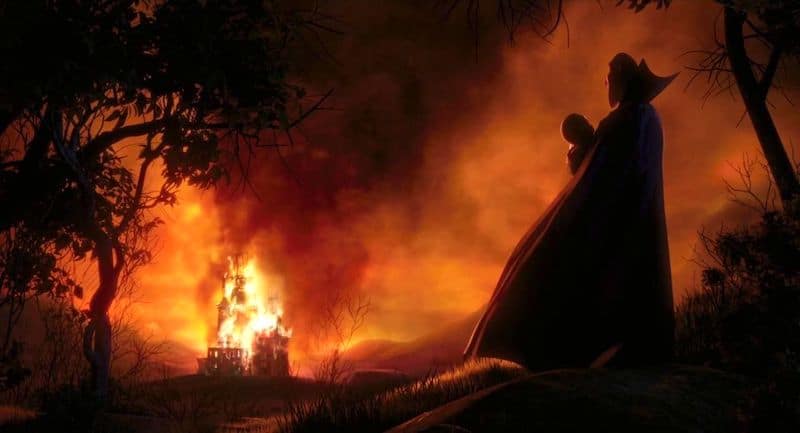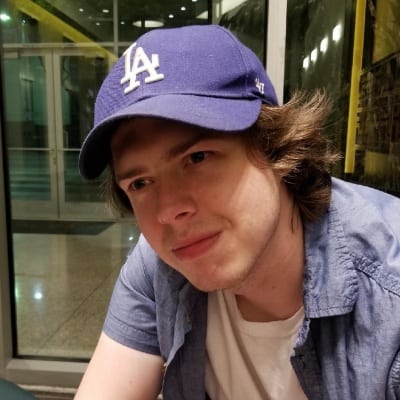
Hotel Transylvania marks the feature debut of a renowned figure from the world of TV animation, Genndy Tartakovsky, whose work ranges from Samurai Jack to The Powerpuff Girls. Tartakovsky, for those of you who understandably don’t remember this lil gem of a movie, also did the opening prologue for Priest, by far the most ambitious part of that movie.
Ambition is certainly something that shows through in a lot of Tartakovsky’s work. There’s an artistry to Samurai Jack work we don’t see in theaters, but Tartakovsky is hoping to change that. To start, he’s made Hotel Transylvania, which the director describes as the “ultimate issue of MAD Magazine.” With all the film’s monsters bolstering with small, playful details, a MAD Magazine reference is surprisingly apt for Hotel Transylvania.
Here’s what the film’s director Genndy Tartakovsky had to say about that style of the film, the ups and downs of comedy, and why he isn’t preparing for Popeye by watching Robert Altman’s “classic” over and over again:
Some of your previous work has material which definitely plays for an older audience. For Hotel Transylvania, it’s clearly an all-out kids’ movie. Did you always envision it that way?
Yeah. It’s funny, everything I’ve done I’ve never tried to purposely make for kids or adults. You always do it for yourself. I never know what a kid would like or find funny, and it’s the same thing with adults. Comedy is so objective. Obviously there’s standards, like I’m not going to do a big sexual joke. I’m going to do humor that a kid will like and hopefully an adult will find funny. You just try to be sincere and honest, and the more I did that, the more I felt the comedy delivered.
What about for the horror angle? Unlike, say, ParaNorman, the movie doesn’t have that kind of edge which could scare kids.
Absolutely. That was a decision on day one. We thought we were either going to make a funny/scary movie for kids or a funny movie with monsters, and we chose the latter. I have three younger kids, and I’m not comfortable scaring them at every turn. There’s a lot of kids who like that, but, for sure, the studio wants a funny movie that isn’t scary.
Even though you said you don’t think about what an adult or kid would find funny, aren’t there times where you have to do that a little, with notes and screenings?
You know, it was interesting going through this process. I did get a lot more of that, “Yeah, kids will find that funny.” I remember Jon Lovitz asked, “What could I do that kids will find funny?” He would ask himself that shit. It kind of baffled me, but then I saw what he was trying to do and I totally called. There was a lot more of adults trying to think what kids would like.
Which could easily leans towards condescension.
Yeah. Through the television shows and the film, I never wanted to do that. I always wanted to make sure we were talking to you, not down to you.
When it comes to the film’s comedy, you’ve said before how stressful a single joke can be. Since every scene is packed with gags, how exhausted are you right now?
[Laughs] It was actually a really challenging experience for me. It’s true, comedy is ten times harder than action. Samurai Jack was so much easier than trying to be funny. Funny is different for every person. I didn’t write a lot of the jokes, and in the past, I was used to coming up with the jokes and letting them breathe. In this case, I would get a joke in script form, would have to understand it, and then I’d have to act it. You try to act the comedy, which can sometimes be subtle, and sometimes not. It’s a more tricky area for me which I haven’t had much experience in. I’ve told hundreds of jokes, but ones that I’ve written. I have to know what the joke is, analyze it, know the timing, and then execute it.
So are there weeks where you’re focusing on a single joke?
Oh, yeah, all the time. Then you go to a test screening, and you see what lands or what doesn’t. What’s interesting about watching this film is, some of the lines wouldn’t land with the audience, since the kids were just waiting for something physical to happen.
Is it horrifying when you see a kid not crack up at a joke?
It is. You feel like you’ve failed. It’s interesting…that made me think about all the stuff that I’ve done, thinking, “My God, how many jokes have I done on TV that kids don’t laugh at?” [Laughs] It’s such a different experience watching something at home than going to the theater with an audience.
Knowing that the physical comedy is what you needed, how did that impact the character designs? Like, say with Quasimodo, who is completely horrifying.
Oh, good, good. When I came on-board he was already designed and normal-looking, so we squished him, gave him funny and grotesque expressions, which made him much more fun to look at. That was a big philosophy for this movie: funny drawings. I wanted this to be like an ultimate issue of MAD magazine. It does have its fair share of dialog, but I wanted the movie to have that feel.
Since you didn’t write this like your previous work, did you see the character designs as a way of steering the film more towards your voice?
Yeah. I definitely liked the designs that were there already, but I thought the way we animated them was where my point-of-view came in. With some of the test-animation, Frankenstein was a great design, but we tweaked him to make him different.
How much did you and your animators tussle over the Dracula design?
When I came on, we redesigned him completely from scratch. He wasn’t at a place I was really happy with, so luckily I had the opportunity to change him up and make him a lot more expressive and funny.
Since you had so much creative control on your television shows, from the writing to the execution, how did the scale of Hotel Transylvania compare? Was it less intimate?
Samurai Jack was a TV model where we oversaw animators, but here I was able to work with animators in house. Actually, with Hotel Transylvania, it was more intimate than what we’re used to do. They’d show me a scene, and then I was actually able to draw over each shot on a tablet, discuss it, and really be hands on. With the speed we were going at, I had almost 90 animators. I was looking at 40 shots a day, in sessions between 2–3 hours at times, and it was intense. Luckily, I could close my eyes and watch the movie, which made it a lot more helpful. Seeing animation and the characters come alive is something I look forward to everyday. You see where on a storyboard panel a joke wasn’t landing, but when the performance comes alive, you go, “Oh, there’s the joke.” That’s really fun to watch.
What drew you to animation from the beginning? Did you ever have interest in live-action?
I did, but my beginning was definitely in animation. I’m sure if the right story came along I would do a live-action movie. It’s the drawing, the caricature, and the unrealistic characters that get me excited. You know, it’s creating a world you can never find anywhere else from an artist’s point-of-view.
And do you just prefer having full control of where the camera is?
In live-action you can pretty much do that. There’s not a lot of limitations now. It’s not so much about where to put the camera, but really having full control of the actors [Laughs]. I can make them do whatever I want. I’m only limited to what my imagination doesn’t allow.
You said when you came to this project, you felt you needed to act strong-headed, almost like a bully, to really seize control. Did you stick with that plan?
Strong-headed is definitely one thing, but you need confidence. So many people look to you and so many people question you. I’m not going to say you need arrogance, but you definitely need confidence. Obviously, it is a business and I’m hired for the job, but I always believe I’m hired to bring my vision to the movie. When they pitched me the movie, that same night I wrote four pages of ideas of what I would do with it, and the next day they saw it and loved it. They said that’s what we were going to do. We saw the same movie, which is really helpful.
Now working in features, do you ever see yourself making something along the lines of Samurai Jack?
Yeah, that’s the whole goal. I have a great relationship with Sony now. Being a big believer in animation, I want to push what I’m doing. I would love to do something outside the norm, like Jack or something different. Hopefully Hotel Transylvania is successful and it’ll open the door for bigger, more creative ideas. I would love to something more outside the box and new.
And, of course, you’re currently working on making Popeye for Sony as well. How much are you watching Robert Altman’s film for inspiration?
[Laughs] Not much. I actually watched that film a lot, because of reruns. I’m looking further back for inspiration.
So, to end on the most important question, have you asked Sony to see Altman’s three-hour cut?
[Laughs] No, no, no. You know, it’s not a bad movie, though. It was on cable a few weeks ago, and I think it’s very artistic. I think his heart was in the right place.
— –
Hotel Transylvania is now in theaters.
Related Topics: Adam Sandler

